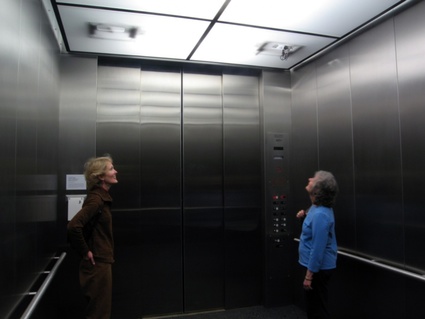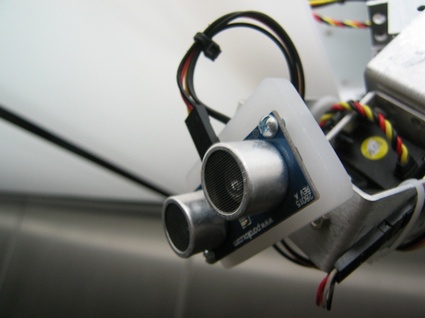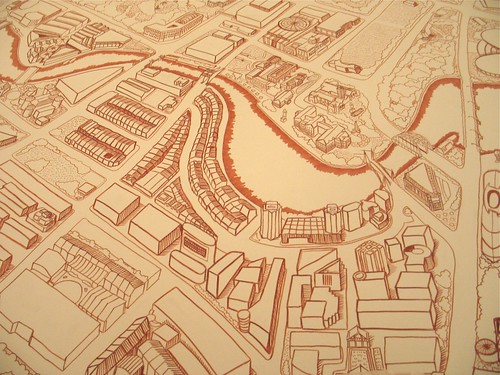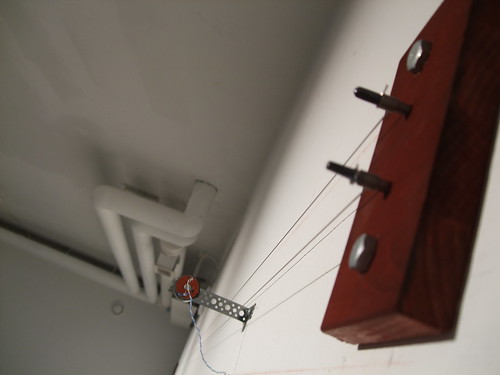

Elevator's Music by Fernando Orellana from jackadam on Vimeo.











Žilvinas Kempinas uses unspooled videotape as a material to create unique works which encourage us to consider tape as both physical object and container of information.
Moving on from his gravity-defying works, such as Double O, in which large shimmering loops of tape are levitated in space by industrial fans, White Noise more explicitly refers to videotape as moving image medium. Viewers enter a dark, almost cinematic space and are confronted by what appears to be a large projection screen of pixelated static. The screen vibrates with the fragmented black and white pixels we associate with an untuned video source. A low hum and fluttering sound reinforce the connotation. As viewers move forward, they become aware that the screen is actually hundreds of strands of videotape stretched in horizontal bands vibrated by air currents created by a multitude of fans.
The obsolescent medium of tape is employed to evoke the flickering visual sensation of noise, thus creating a formal resonance with Ryoji Ikeda’s installation of monochrome pixels and digits in the Exhibition Hall.
Kempinas shows us that videotape is more than merely a neutral carrier of virtual moving images. He uses tape to extend its virtuality, transforming it into a medium of futurity, which sculpts and redefines space.
Zilvinas Kempinas is represented by Yvon Lambert in Paris and New York, and Vartai Gallery in Vilnius
